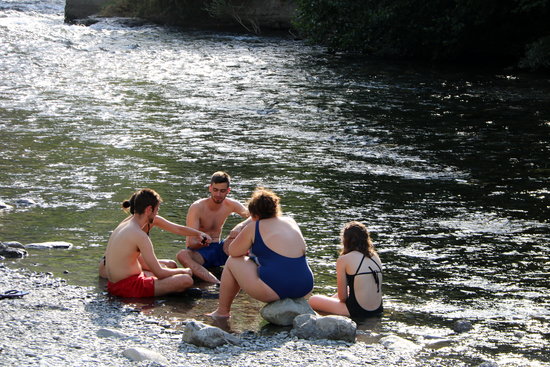Catalonia's tourist industry looking forward to a good August
Hotel occupancy rates expected to reach around 90%, similar to last year but below highs reached in 2017

The start of August brings the busiest time of year for Catalonia's tourist industry, and everything suggests it will be a good month but without breaking any records.
Overall, Catalonia's tourist industry expects occupancy rates to be around 90%, similar to last year but below the highs reached two years ago.
However, the estimates as to the number of holidaymakers visiting the country vary depending on the region and the type of tourism in question.
Tarragona
In the southern region of Tarragona, for example, hoteliers are expecting an occupancy rate of 90%, especially in the coastal area of Costa Daurada.
As for the origin of the tourists expected to visit Tarragona, most will be Catalan and Spanish, followed by British, French and Russian.
Maresme
Meanwhile, on the Maresme coast, north of Barcelona, hoteliers are also expecting to occupancy rates to match the 92% attained last year.
Seaside towns such as Pineda de Mar, Santa Susanna, Canet and Calella are looking forward to welcoming the most visitors, in particular couples and families.
Spanish and Catalan holidaymakers will make up the most visitors, followed by French, Belgian, Dutch, German and British tourists, with the number of Russians expected to rise.
Sitges
South of Barcelona, the popular resort of Sitges, in the area of Garraf, is looking to see occupancy rates recover and approach the high of 93% achieved in 2017.
The first two weeks of August are expected to be the busiest, which coincides with the period when most Catalan and Spanish people are on their annual holidays.
So far, reservations have been made by locals and foreign visitors in equal parts, with the latter coming mostly from France, Germany and Britain, with the Nordic countries on the rise.
Girona
As for the northern region of Girona, most visitors are expected on the coast, in Costa Brava, where occupancy rates of between 85 and 90% are forecast.
The region's capital, the city of Girona and its surroundings, expect to fill up to 75% of hotel rooms, the same number expected in the interior areas of Ripollès and Cerdanya.
With most holidaymakers also expected in the first two weeks of the month, the majority of visitors will be made up of Catalan families, followed by the nearby French and Spanish.
Camping around Barcelona
Yet, the forecasts for occupancy rates in campsites in the Barcelona area are less optimistic than last year, with 80% for chalets and up to 70% for camping plots.
While more visitors from elsewhere in Spain are expected this year, the forecasts suggest there will be fewer campers from other parts of Europe, such as France and the Netherlands.
Lleida and Central Catalonia
The western region of Lleida, meanwhile, is expecting occupancy rates similar to last year of between 80 and 95%, depending on the week and the destination.
Central Catalonia is also looking forward to a good month, especially in its rural areas, particularly in guesthouses in areas such as Berguedà, Anoia and Solsona.
With reservations already at 75%, families from other parts of Europe will make up the majority of holidaymakers, especially from France, the UK, Germany and Belgium.
Positive figures for June
Part of the expectation for a good August is based on the positive figures registered in June, when Catalonia was the place in Spain that received the most international tourists (2.1m).
In fact, visitors to Catalonia made up a quarter of all foreign tourists coming to Spain in June, an increase of 2.2% compared to the same month last year.
The majority of visitors to Catalonia were from France (16.7%), which were also the tourists who spent the most - 2.4 billion euros, a 4.7% rise compared to last year.
Overall, average spending by each visitor was 1,040 euros (up 2.4%), which works out as an average spend of 218 euros a day per person (up 10.2%).
Finally, foreign visitors stayed in Catalonia in June for an average of 5.3 days, some 7.3% less than in the same month last year, according to Spain's statistics institute.